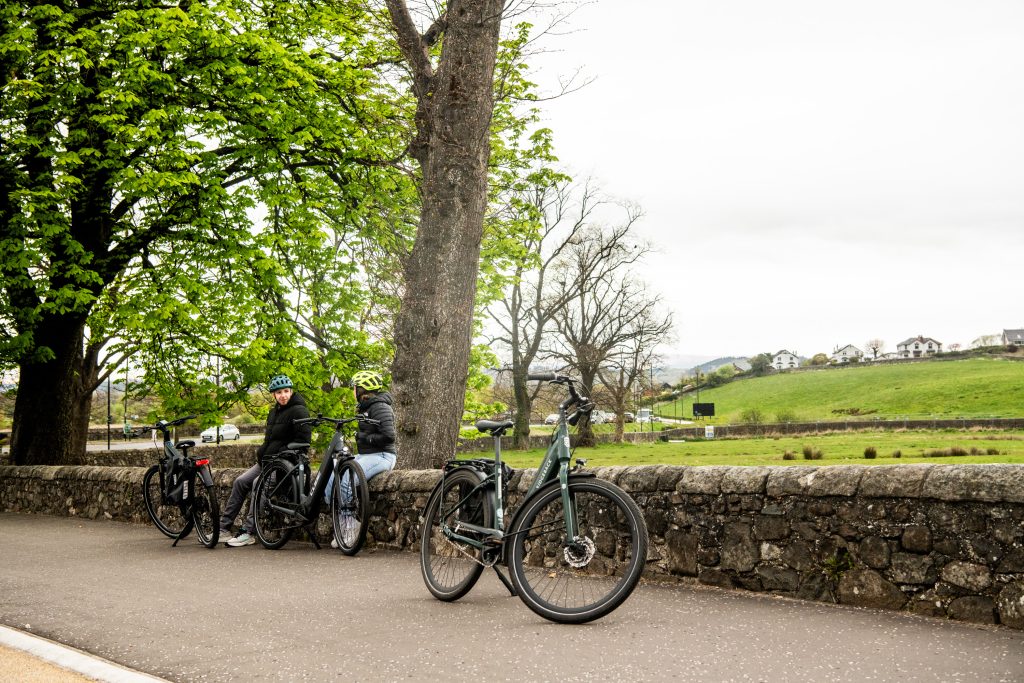The difference between ebikes and electric motorbikes

At FEL Scotland, we’re passionate about the future of electric mobility. Ebikes, when designed and used correctly, are an incredible way to get more people cycling. They help communities reduce emissions, improve health, and make transport more accessible.
But lately, there’s been growing confusion in the media and among the public about what exactly qualifies as an “ebike.” Unfortunately, many of the vehicles being promoted or even sold as ebikes are not legal ebikes at all. That confusion puts riders, other road users, and the wider ebike industry at risk.
What Counts as a Legal ebike?
In the UK, an Electrically Assisted Pedal Cycle (EAPC) is what the law recognises as an ebike. To qualify:
- The motor must not provide assistance above 15.5mph (25km/h).
- The motor power must be no more than 250 watts.
- The motor only assists when the rider is pedalling, no throttle-only riding is permitted.
If a bike meets these conditions, it is treated like a normal pedal cycle. That means:
- No licence required.
- No insurance required.
- No road tax.
- Freedom to ride wherever a conventional bicycle is permitted.
This clarity is what makes legal ebikes so accessible, practical, and sustainable.
Different Rules Around the World
It is worth noting that the definition of an ebike is not the same everywhere. In the United States, for example, ebikes are often classified into three categories, and throttle-controlled bikes can still be considered legal ebikes. That means a cargo bike or with a throttle might be perfectly acceptable in America, but here in the UK it would be classed as a motor vehicle.
This inconsistency adds to the confusion, especially when people buy bikes online from overseas. What is sold as an ebike abroad may not be legal to ride on UK roads.
When an “eBike” Is Actually a Motorbike
Here is the problem. Many of the bikes being sold online, modified in garages, or shown in viral social media clips are not legal ebikes at all. They might look like bikes, but the moment they exceed 15.5mph under power, or rely on a throttle rather than pedal assistance, the law no longer sees them as bicycles.
At that point, they become motor vehicles, in many cases mopeds or motorbikes. That means they require:
- Registration with the DVLA.
- Vehicle insurance.
- A valid driving licence.
- A helmet that meets motorbike standards.
Without these, riders are breaking the law, often without realising it. Worse still, many of these self-built or imported machines do not meet basic safety standards, putting both riders and the public at risk.
eBikes and Local Pathways
Here in Stirling, we are fortunate to have fantastic cycling infrastructure through the Walk Cycle Live Stirling pathways. These routes are designed to help people travel safely and sustainably on foot and by bike. Importantly, legal ebikes are permitted on these pathways, just like regular bicycles.
But anything that falls into the “unrestricted” category, machines that go beyond the 15.5mph assistance limit or rely on throttles, are classed as motor vehicles. These are not legal on shared-use paths and should only be used on roads. This is a crucial distinction, both for safety and for ensuring that cycling infrastructure remains inclusive for all.
FEL Scotland’s Position
We want to be absolutely clear. FEL supports only legal, road-compliant ebikes. We will not work with vehicles that break the law. Not only do these illegal machines endanger their riders, they also damage the reputation of the legitimate ebike industry.
For the same reasons, we will not loan an ebike to anyone under the age of 14. This is the legal minimum age for riding an ebike in the UK, and it ensures both rider safety and compliance with the law.
Through projects such as the ebike library, we make sure people have access to safe, legal, and high-quality ebikes. Whether you are exploring options for commuting, shopping, or leisure, our ebikes are designed to give riders the confidence and convenience of electric assistance without the risks of unregulated machines.
Protecting the Future of eBikes
If you are considering an ebike, make sure you understand the law. Buy from reputable suppliers who can guarantee compliance, and do not be tempted by modified or high-powered imports. Remember, if it goes faster than 15.5mph under motor power, or has a throttle-only mode, it is not an ebike, it is a motorbike.
At FEL Scotland, we will continue to champion safe, legal ebikes as a cornerstone of Scotland’s sustainable transport future. Together, let us protect the integrity of ebikes, and keep the roads and our pathways safe for everyone.
